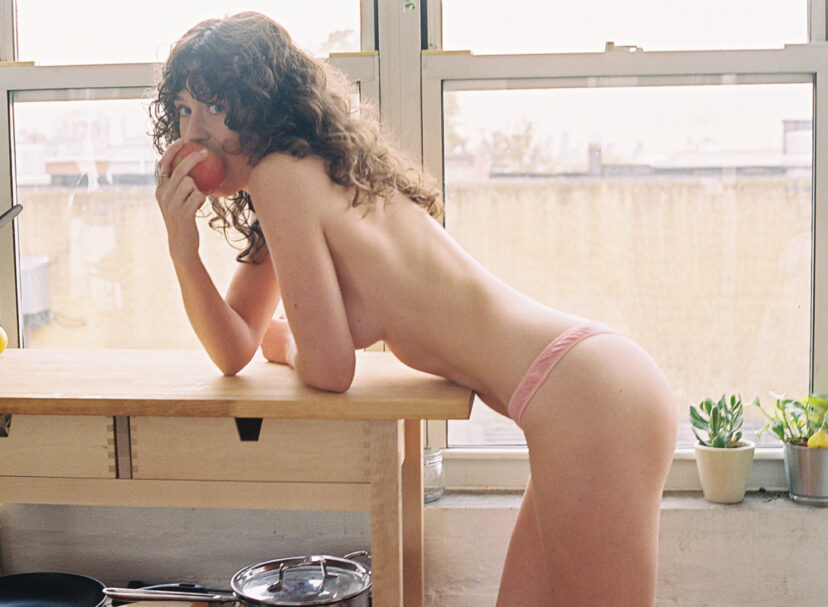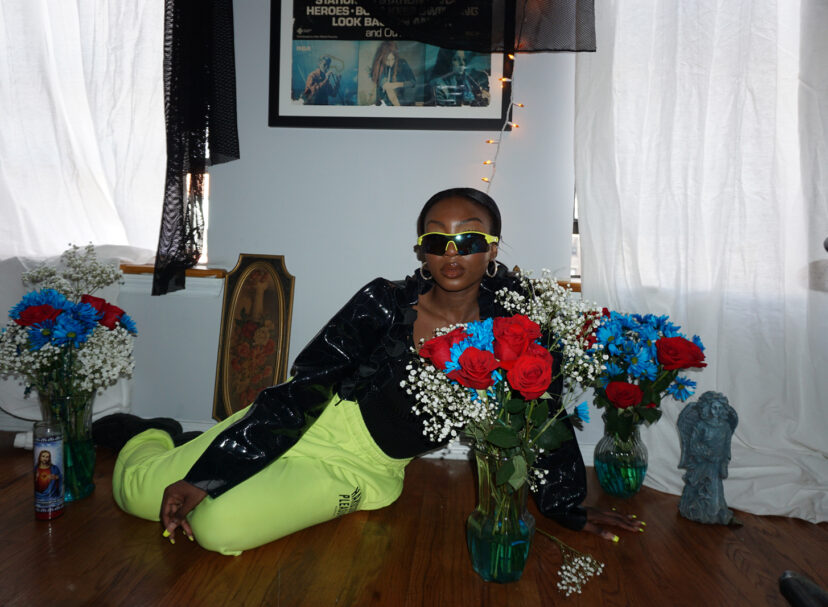Text: Monica Uszerowicz
Photos: Elisabet Davids
Stylists: Alpha Vomero
Hair and makeup: Andrea Helgadottir
Kria is named for the Arctic Tern, a bird whose bones jewelry designer Johanna Methusalemsdottir discovered walking on the beach in her home country of Iceland. Now based in New York, Methusalemsdottir continues to find inspiration in nature, both its content and form—animals and their bones; seasons and their cycles—and it’s immediately visible. Some of the pieces are actual animal parts, vertebrae cast in brass, or evocative of branches and bones: whisper-thin fish hooks, brass cod bones, fairy-sized talon-shaped rings. (The intrinsic transformation that occurs when something taken from nature becomes adornment feels illusive, too.) Methusalemsdottir grew up deeply connected to the natural landscape, always maintaining a profound connection to the place of her birth. As such, Kria’s practice is completely sustainable, utilizing locally recycled metals for the collection and recycled papers for its packaging. We spoke with Methusalemsdottir about her history, the power of making jewelry directly drawn from the environment, and Kria’s upcoming collection.

Can you tell me about your relationship to nature while growing up in Iceland? I like that Kria is inspired by “natural orders and cycles and the illusions they create.”
I spent my entire childhood outside in a country where there was essentially nothing urban to divide us from nature. There were “hraun,” lava rock fields, steps from my backdoor in what were considered the suburbs at the time, and that’s where we played. Though nature may be in constant change anywhere, in Iceland you essentially shifted from one of two seasons, winter and spring, over the course of a year. But the weather could change dramatically at any moment. In Iceland, everything works in extremes. It is mostly dark for nine months of the year and light the other three. During the darkness, one spends most of their time indoors and creativity has been a natural consequence of that. There’s a lot of time to think when it’s dark, and there’s a lot of time to explore when it’s light. The appearance of things can be completely different between the two. Many illusions are created in this way. This may be my inspiration when I take natural objects out of context and they begin to appear to be something else.
When and why did you move to New York? What was it like then, and how did you adjust to the different climate, both physical and mental?
I moved to New York 1988 to be an au pair, which was a simple way to come over back then. New York was massive. It was very different, but so was being young and I was fascinated by everything. Everything about it excited me—the weather, the people, the sounds, and the fact that you could get lost in a crowd anywhere.
I read that you were initially a stylist, attending F.I.T. before becoming a jewelry designer. What was that like?
I pretty much got into styling by default. I am not a huge fan of the fashion world proper per say, but I like beautiful and interesting things as well as people, and styling brought me closer to them. I actually attended F.I.T. for jewelry classes while interning for Me & Ro. I became their first employee working out of their apartment kitchen. In New York City at that time, it seemed these things just happened if you were open to them.
And what led you to jewelry design? I know you worked with clay and small items as a child.
As I child, I actually played a lot with bones in the summers at my grandparents’ farm out in the countryside. This was not uncommon as we had a traditional game called “leggjabu,” where you pretended different bones were the different animals of the farm. The days were almost endless in the summer, and we were left to ourselves once we finished helping with the cows. We could spend hours alone playing this way in the cliffs, and our imaginations were allowed to fill all that time and space we had.


I spent my entire childhood outside in a country where there was essentially nothing urban to divide us from nature.


As stated in Kria’s biography, you’ve “nurtured a kinship in the mysticism surrounding objects of ritualization.” Bodily adornment, even outside of ritual, feels very primitive, and the way you work with so many pieces of the animals reminds me of the idea that one should use—and honor—all parts of a slain or dead animal. Could you tell me more about this?
Ritualism and the adornment of the body has been a part of human existence from the beginning. Even though some people may not recognize this in themselves today, it’s a part of us all. It continues around the world, and Kria is interested in why that is and how to encourage it. How you do so is very personal, and many people who wear Kria tend to layer it a lot. In Iceland, it’s described by our friends as a “Kria bib.” This wasn’t something planned. It happened naturally as people wore it more. Now we see the “bib” approach to wearing jewelry and objects more clearly in cultures everywhere, especially indigenous ones. As for using everything from an animal, there is a respect for it for sure, but also a rooted tradition in Iceland that comes more out of necessity as the people have had little to work with and survive from in the past. As a company, we do not want to waste anything.
It’s wonderful that your daughter, India Menuez, models your work. Has motherhood and your relationship with your children inspired or affected your practice in any way?
My daughters inspire me to be and do better every day—to lead by example. I feel very fortunate to have two very strong ladies to share our life and work with, and they inspire me immensely. I have been a mother now for half of my life, so everything I do has a part of them in it.
Sustainability is an important part of your line. Please tell me about the sorts of materials you use for Kria and how you source them.
We pride ourselves on our sustainability as a company. All of our metals are now recycled locally in the New York area by our caster and suppliers. Aside from that, we continue to work with the same people we have since we started. I have worked with our finisher for over twenty years, long before Kria began, and we consider him and his employees family. Our packaging is now made from one hundred percent post-consumer recycled materials and printed with soy-based inks. We firmly believe that everyone needs to be responsible in the way they live, consume, and produce their goods. It’s the only way forward.




I love your collaborative works and projects. What is next for the line? What’s next for you?
Next, I head to Iceland for the current installation of the Weather Diaries collaboration with photographers Cooper and Gorfer, where I will speak about my pieces at the Nordic House in Reykjavik on June 3rd. This exhibition had its premiere at Museum Angewandte Kunst in Frankfurt in 2014 as the centerpiece of the 3rd Nordic Fashion Biennale. It has since been exhibited at the National Museum of Photography in Denmark, the Nordic House in Feroe Islands, and the CODA Museum in the Netherlands. We are currently in production of the first collection for 2016, and a second which is already designed. I also just designed a custom necklace for a new television show in which the jewelry is an important part of the story’s premise. It will be premiering on a major US network this year, so I cannot offer any other details yet. My husband and I are also evolving the company toward becoming a full-time project for both of us as we begin to expand and collaborate more.
http://www.kriajewelry.com/

